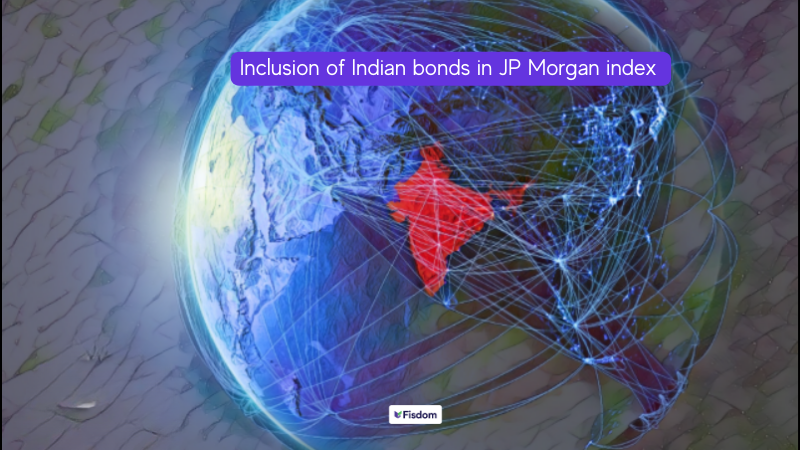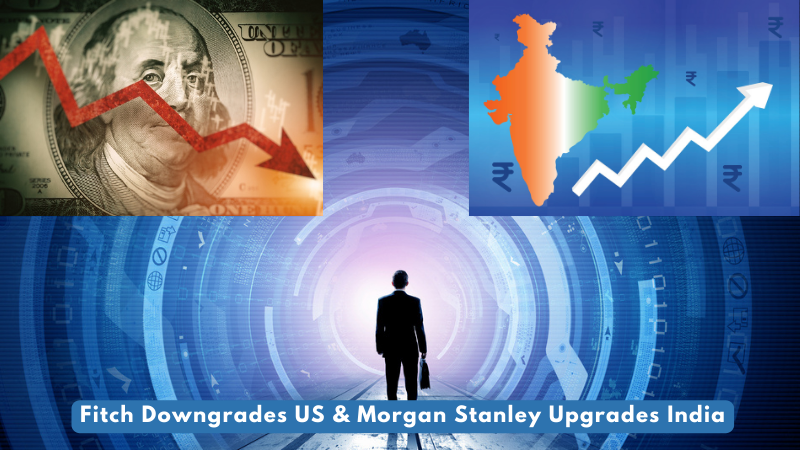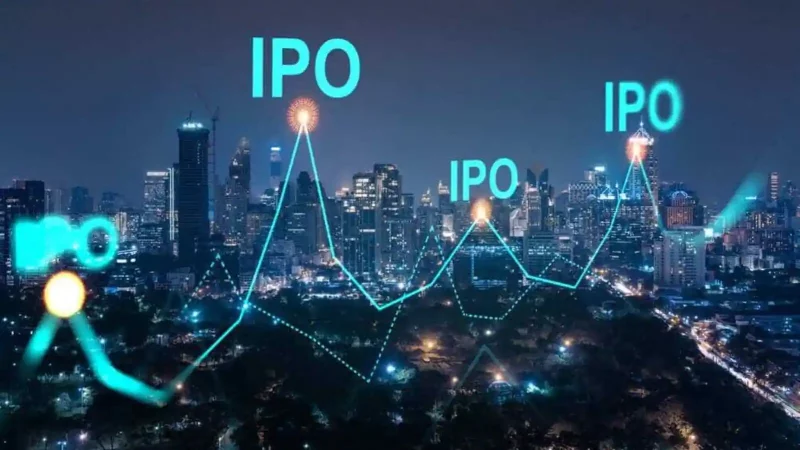
Investing in long-term stocks is one of the top choices of risk-averse investors. These stocks are less volatile and are considered to provide more or less stable and consistent returns to the investors making it a healthy choice to create a long-term portfolio. These stocks are also often associated with long-term goals and therefore a good investment option at every market dip. Some of the key long-term stocks to watch out for in 2023 and other related details investing in long-term stocks are highlighted hereunder.
Read More: 7 long-term investing strategies in the stock market
Top long-term stocks to watch out for in 2023
Let’s take a look at the top long-term stocks to watch out for this year:
ICICI Bank Limited
ICICI Bank is a leading private sector bank in India, offering a wide range of financial products and services to individuals, SMEs, and corporate clients. With a large network of branches and ATMs, the bank provides convenient access to services including savings accounts, loans, investments, and digital banking options. It caters to diverse customer needs and aims to support their financial growth and success.
The key details of this company are.
| Category | Details |
| Market Capitalization | Rs. 6,65,832 crores |
| PE Ratio | 19.53 |
| Return on Equity | 16.83% |
| Debt Equity Ratio | – |
| Promotor’s Holdings | – |
| Share price | Rs. 950.65 |
| Dividend Yield | 0.84% |
The trailing returns of ICICI Bank Limited are tabled below
| Period | Trailing Returns |
| 1 year | 28.50% |
| 3 years | 42.74% |
| 5 years | 26.01% |
| 10 years | 15.55% |
HDFC Bank Limited
HDFC Bank, a publicly held banking company, is the largest private sector bank in India. It received approval from the Reserve Bank of India (RBI) in 1994 to establish a bank in the private sector. With its headquarters in Mumbai, HDFC Bank offers a comprehensive range of banking and financial services, including retail banking, wholesale banking, and treasury operations. The bank is promoted by HDFC Ltd., which holds a 19.32% stake and has established itself as a prominent player in the Indian banking industry.
The key details of this company are.
| Category | Details |
| Market Capitalization | Rs. 9,15,315 crores |
| PE Ratio | 19.63 |
| Return on Equity | 16.73% |
| Debt Equity Ratio | – |
| Promotor’s Holdings | 25.59% |
| Share price | Rs. 1,638.35 |
| Dividend Yield | 1.18% |
The trailing returns of HDFC Bank Limited are tabled below
| Period | Trailing Returns |
| 1 year | 17.69% |
| 3 years | 20.12% |
| 5 years | 9.92% |
| 10 years | 16.47% |
Reliance Industries Limited
The name Reliance is one of the biggest names not only in the country but also across the globe. This company is a Fortune 500 company and the biggest private sector company in India. This conglomerate has grown from a textiles and polyester company to a diversified conglomerate operating in various sectors such as energy, materials, retail, entertainment, and digital services.
The key details of this company are.
| Category | Details |
| Market Capitalization | Rs. 17,03,063 crores |
| PE Ratio | 25.43 |
| Return on Equity | 9.20% |
| Debt Equity Ratio | 0.22% |
| Promotor’s Holdings | 50.41% |
| Share price | Rs. 2,519.95 |
| Dividend Yield | 0.32% |
The trailing returns of Reliance Industries Limited are tabled below
| Period | Trailing Returns |
| 1 year | -2.14% |
| 3 years | 19.62% |
| 5 years | 22.55% |
| 10 years | 19.69% |
Infosys Limited
Infosys Ltd is a leading global provider of consulting, technology, outsourcing, and digital services. It specializes in assisting clients with their digital transformation strategies and is the second-largest IT company in India. Infosys offers a wide range of services, including strategic consulting and software development, to help businesses leverage innovative technologies and achieve growth. The company prioritizes sustainability and social responsibility while serving clients worldwide.
The key details of this company are.
| Category | Details |
| Market Capitalization | Rs. 5,44,049 crores |
| PE Ratio | 24.52 |
| Return on Equity | 32.30% |
| Debt Equity Ratio | 0.00% |
| Promotor’s Holdings | 15.14% |
| Share price | Rs. 1,314.00 |
| Dividend Yield | 2.38% |
The trailing returns of Infosys Limited are tabled below
| Period | Trailing Returns |
| 1 year | -10.08% |
| 3 years | 22.93% |
| 5 years | 16.70% |
| 10 years | 16.08% |
TCS
TCS (Tata Consultancy Services) is the crown jewel in the Tata Group. For over five decades, this organization has collaborated with numerous global enterprises to support their progress through IT services, consultancy, and business solutions. TCS provides a comprehensive range of services and solutions that combine consulting expertise, cognitive capabilities, and integrated offerings in the areas of business, technology, and engineering.
The key details of this company are.
| Category | Details |
| Market Capitalization | Rs. 12,13,415 crores |
| PE Ratio | 27.84 |
| Return on Equity | 47.26% |
| Debt Equity Ratio | 0.00% |
| Promotor’s Holdings | 72.3% |
| Share price | Rs. 3,316.20 |
| Dividend Yield | 3.59% |
The trailing returns of TCS are tabled below
| Period | Trailing Returns |
| 1 year | 1.68% |
| 3 years | 18.91% |
| 5 years | 13.49% |
| 10 years | 16.05% |
What are the factors to be considered for long-term investment in stocks?
Some of the key factors to be considered for investment in long-term stocks are mentioned below.
Company Fundamentals
The primary step while investing in long-term stocks is evaluating the company’s financial health by analysing its financial statements. Investors should consider financial metrics such as revenue growth, profitability (profit margins), return on equity (ROE), and debt levels to ascertain its fundamentals. A company with consistent revenue growth, healthy profit margins, manageable debt, and positive cash flow is generally considered more stable and attractive for long-term investment.
Risk Assessment
This is crucial for any investment decision and therefore, identifying and assessing the risks associated with the investment is paramount. This includes analyzing industry-specific risks (e.g., technological disruptions, regulatory changes), company-specific risks (e.g., management changes, litigation), and market risks (e.g., market volatility, economic downturns). Understanding the risks involved helps investors make informed investment decisions and manage their portfolios effectively.
Valuation
Evaluation of the company’s valuation is required to determine if it is reasonably priced or potentially undervalued. Comparing the valuation metrics like the price-to-earnings (P/E) ratio, price-to-sales (P/S) ratio, and price-to-book (P/B) ratio with industry peers and historical averages can provide insight into the valuation of the company and its relative position in the market. A company trading at a reasonable or discounted valuation may offer an attractive long-term investment opportunity.
Management Team
Investors should also evaluate the company’s management team, including the CEO and key executives. Researching their experience, qualifications, and track record is a crucial part of analysing long-term stocks. Investors should look for a management team that has demonstrated effective leadership, strategic decision-making, and successful execution of business plans. A competent management team is crucial for driving long-term growth and shareholder value.
Growth Potential
The investor should assess the growth potential of a company by analyzing its future prospects and expansion plans. Factors such as new products or services, entry into new markets, and potential acquisitions can indicate strong growth potential, increasing the likelihood of generating long-term value.
Dividends Policies
It is important to examine whether the company pays dividends and has a history of increasing dividend payouts over time. Dividends provide a steady income stream and reflect the company’s commitment to shareholder returns. Additionally, considering shareholder-friendly initiatives like share buybacks can enhance shareholder value making it lucrative for investors with a long-term perspective
Competitive Advantage
The investor should consider whether the company possesses a sustainable competitive advantage over its rivals. This advantage could stem from factors such as proprietary technology, strong brand recognition, patents, economies of scale, or a unique business model. Competitive advantage helps a company maintain its market position and increase the chances of generating consistent long-term returns.
Industry and Market Analysis
It is crucial to assess the industry in which the company operates, including its growth potential, competitive landscape, and disruptive forces. Factors such as market trends, customer behavior, and regulatory conditions can significantly impact the industry’s performance. Investing in industries with long-term growth prospects improves the likelihood of successful long-term investment.
Economic and Market Conditions
The investor should consider the broader economic and market conditions that can affect the company’s performance. Evaluating factors such as interest rates, inflation, GDP growth, consumer sentiment, and geopolitical risks is essential. These macroeconomic trends can influence a company’s operations and future growth, thereby impacting long-term investment outcomes.
Conclusion
Long-term stocks are a good source of diversification to the investment portfolio ensuring that the overall risk is managed. Investing in long-term stocks is one of the key components in meeting long-term goals like retirement planning and ensuring that such goals are met in due time. While they may not provide huge short-term gains, quality long-term stocks should be on the watchlist of any investor for wealth creation and taking advantage of market dips from time to time.
FAQs
Some of the benefits of investing in long-term stocks include stable returns, wealth creation in the long term, diversification, etc.
A few key shortcomings of investing in long-term stocks include possible higher capital investment, opportunity cost, lack of liquidity, the influence of market volatility, etc.
The target investors are usually risk-averse investors who focus on getting more or less stable returns from their investments in stock markets.
The best time to invest in long-term stocks is when fundamentally strong stocks are trading at a value lower than their intrinsic value due to market fluctuations. Additionally, it is important for investors to align their investment in long-term stocks with their risk-return perspective and their long-term investment portfolio.
**Important Disclaimer**
This blog post and information included here are not intended to serve as investment advice and should NOT be used as a substitute for the advice of an appropriately qualified and licensed professional registered investment adviser.
Please note the information provided here is for educational/informational purposes only. Although we attempt to provide accurate and up-to-date information, no guarantee is made to that effect. Investments in securities market are subject to market risks, please read the scheme related documents carefully.



























